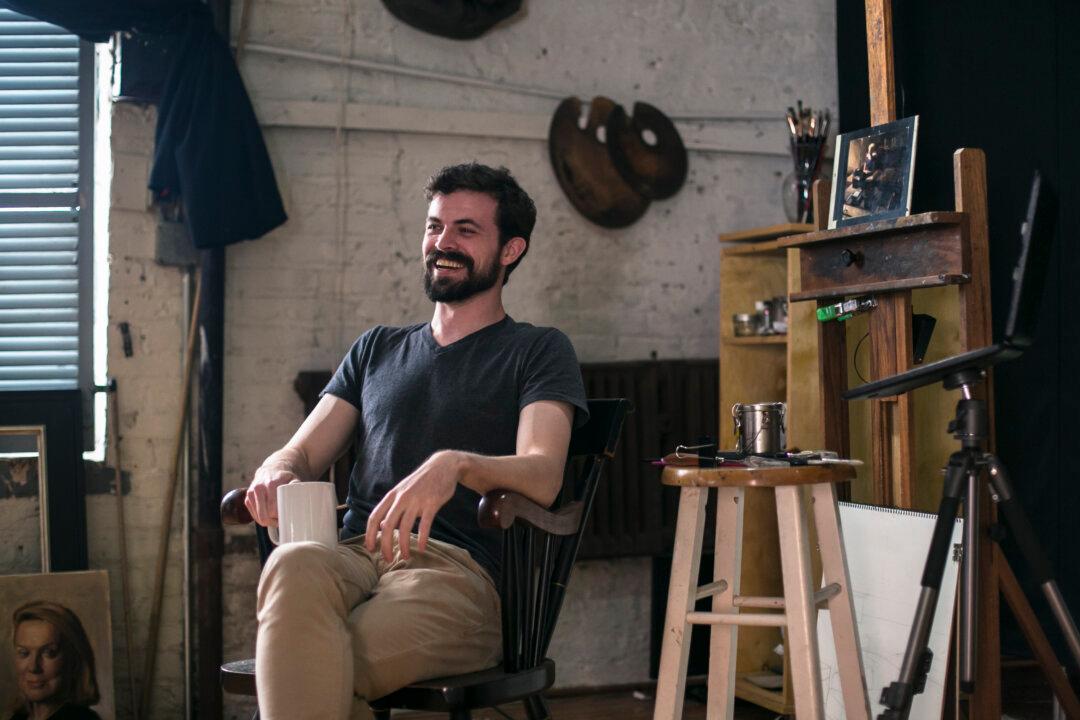NEW YORK—He left a coat on a metal folding chair, in a rather empty room. Sunlight gently beamed onto the tiled floor, chair, and coat. Edmond Rochat painted that scene in solitude. The way he captured the light and shadows evoke layered feelings—anticipation, everyday familiarity, a hint of foreboding. The coat seems either forgotten or treasured, as a singular outdoor garment. It holds traces of the owner’s presence. Rochat titled the finished painting “Vagabond.”
You may wonder how a painting of simply a coat on a chair can evoke such a myriad of feelings? Why did Rochat decide to paint “Vagabond” in this day and age?

Painting by Edmond Rochat, titled "Vagabond," oil on linen, 12 inches by 12 inches, 2012. Courtesy of Edmond Rochat






